LIVE – Updated at 06:19
Fuel supply to the engines of the Air India plane that
crashed last month
was cut off just seconds after the flight took off, a preliminary report by Indian aviation accident investigators has said.
Exactly a month back, the London Gatwick-bound flight
came down
in a residential area of Ahmedabad on 12 June, killing a total of 260 people.
The 15-page document published by India’s Aircraft Accident Investigation Bureau, which is part of the
ongoing probe
into what caused the
Boeing 787-8 Dreamliner
to come down, found that fuel control switches were moved to “cut-off” position as the aircraft rose from take-off.
The report also includes a conversation between the pilots on the fuel controls before the crash.
“In the cockpit voice recording, one of the pilots is heard asking the other why did he cut-off. The other pilot responded that he did not do so,” the report said.
Of the 242 people onboard flight AI171 to
London Gatwick
, 241 were killed, including 53 British nationals. The flight crashed into a hostel complex at Byramjee Jeejeebhoy Medical College, killing several students and residents on the ground.
Only one passenger – a British-Indian man seated in 11A – survived.
Key Points
- India finds engine switch movement in fatal Air India crash
- Air India issues statement on preliminary report
- Plane had been checked for technical issue before flight
- Cockpit audio reveals pilots confused by engine shutdown
- Simon Calder gives his verdict on the preliminary report
Miracle moment British survivor of Air India crash emerges from flames
06:19
,
Arpan Rai
This is the miraculous moment the sole
survivor
of the
Air India
crash
emerges from the flames of the
Boeing wreckage.
All but one of the 242 people on board were killed when the
Air India
Boeing 787-8 crashed in
Ahmedabad
on 12 June.
New footage has now emerged on social media of British man Vishwas Kumar Ramesh walking out of the crash site.
The video shows Mr Ramesh walking out of flames with a phone in his hand as he limps out of the deadly accident.
Locals are seen helping him as black smoke engulfs the sky behind.
New footage shows moment British survivor of Air India crash emerges from flames
Is flying safe? The facts and figures after Air India tragedy
05:57
,
Arpan Rai
The devastating loss of
Air India flight AI171
from Ahmedabad to London Gatwick is an example of an extremely rare event: a
large jet crashing
on an intercontinental air route.
Many prospective travellers will see the images of the tragedy in India, and three other passenger jet crashes in the past six months, and conclude that aviation is becoming more dangerous.
Yet without diminishing these disasters and the devastating human toll, this remains the
safest decade in aviation history
.
Such is the obsession with safety among aviation professionals that many risks have been engineered out. The last fatal accident involving a UK passenger jet was in the 1980s.
In 2023, accidents and fatalities were at a record low
, with no scheduled passenger jets involved in fatal crashes.
Simon Calder
, travel correspondent, explains:
Is flying safe? The facts and figures after Air India tragedy
‘Like an earthquake’: Inside the doctors’ hostel hit in Air India tragedy
05:50
,
Arpan Rai
Navin Chaudhary’s lunch was interrupted by
a deafening explosion
. Turning, he saw flames engulfing the dining area where he and his fellow trainee doctors were eating.
As the fire advanced, Mr Chaudhary escaped through a window. From the ground, he saw the tail cone of an
Air India
plane jutting out of the burning building.
Driven by a sense of duty, Mr Chaudhary and his fellow medical students sprang into action.
“There was fire and many were injured,” he recalled.
He immediately went to the hospital’s intensive care unit, where a stream of injured people, many suffering from burns, were being rushed in.
‘Like an earthquake’: Inside the medical hostel hit in Air India tragedy
British families of Air India crash victims feel ‘utterly abandoned’ by UK government
05:41
,
Arpan Rai
Families of British victims of the
Air India plane crash
are experiencing “pain and frustration” due to delays in
identifying and repatriating their loved ones
, according to a government minister.
The
Boeing 787 Dreamliner
crashed shortly after take-off on 12 June, marking one of the
deadliest plane accidents
in terms of British casualties.
The aircraft crashed into a medical college hostel in a residential area of Ahmedabad, killing 241 of the 242 people on board.
Foreign Office
minister Hamish Falconer told the House of Commons that the
Foreign, Commonwealth and Development Office (FCDO)
had set up its reception centre at a hotel close to the airport “because we thought that would be the best place to receive British nationals rather than the hospital where, tragically, there are no living British nationals”.
British families of Air India crash victims feel ‘utterly abandoned’ by UK government
What’s the safest seat on a plane? What experts say after miracle of seat 11A on Air India crash
05:15
,
Arpan Rai
After the miraculous survival of a sole passenger on the
Air India
flight that crashed moments after takeoff killing everyone else onboard, a
debate has ignited over whether his seat
, 11A, is the safest on a plane.
Ramesh Viswash Kumar, who was seated in 11A
, recounted how his proximity
to an emergency exit on the London-bound Boeing 787 Dreamliner that crashed
on Thursday
allowed him to walk to safety
.
Sitting next to an exit door may increase a person’s chances of survival in a crash. However, experts say that the specific seat number, such as 11A, is not universally the safest, as aircraft can have numerous different layouts.
However, aviation experts say that determining the safest seat is not so simple, as aircraft configurations vary significantly and survival usually depends on a complex combination of factors.
“Each accident is different, and it is impossible to predict survivability based on seat location,” Mitchell Fox, a director at the Flight Safety Foundation, a US-based nonprofit, said.
What experts say after miracle of seat 11A on Air India crash
He flew home to bury his father. The Air India crash took his life
05:08
,
Arpan Rai
Inside a modest two-bedroom apartment in India’s
Ahmedabad
, Ravina Daniel Christian clutches the edge of her tear-soaked scarf. The home is crowded with relatives but the only voice that carries through the room is hers – spilling with loss.
Just 15 days ago, she buried her husband. On 12 June, her 30-year-old son Lawrence Daniel Christian, who had come home from
London
to perform the last rites of his father, was
killed in the catastrophic Air India crash
that has
claimed at least 270 lives.
“He came only for a few days,” she says. “He was returning on 12 June. Just a short visit – only to honour his father.”
Read
Namita Singh
’s report from Ahmedabad:
He flew home to bury his father. The Air India crash took his life
Air India flight ‘was doomed’ without sufficient power, says travel expert Simon Calder
04:59
,
Arpan Rai
Fuel switches for the engines of the
Air India
jet
which
crashed
last month, killing 241 people on board, were cut off, a preliminary report into the disaster has said.
The first crucial question: what caused the transition?
The report says: “In the cockpit voice recording, one of the pilots is heard asking the other why did he cutoff? The other pilot responded that he did not do so.”
Both engines were starved of fuel at the moment when power was most needed.
It took 10 seconds for one engine and 14 seconds for the other for the switches to be returned to the normal position – “transitioned from CUTOFF to RUN”.
The second crucial question: why did that take so long?
Engines can relight, but it takes time. The report says that, after the switches reverted: “Engine 1’s core deceleration stopped, reversed and started to progress to recovery. Engine 2 was able to relight but could not arrest core speed deceleration and re-introduced fuel repeatedly to increase core speed acceleration and recovery”.
With the engines “below minimum idle speed” at which they could supply the necessary power, the rapid air turbine (RAT) had automatically deployed. This is an emergency device to supply hydraulic power to the aircraft’s control surfaces. But with insufficient power, the plane was doomed.
Read more here:
Air India flight ‘was doomed’ without sufficient power, says Simon Calder
What are the fuel switches at the centre of the Air India crash probe?
04:31
,
Arpan Rai
The Boeing 787 Air India’s plane’s engine fuel control switches were switched off briefly, starving them of fuel, a preliminary report from investigators probing the crash have revealed.
But what are fuel switches?
They are switches that regulate fuel flow into a plane’s engines. They are used by pilots to start or shut down engines on the ground or to manually shut down or restart engines if an engine failure occurs during a flight.
Aviation experts say a pilot would not be able to accidentally move the fuel switches that feed the engines. But if moved, the effect would be immediate, cutting off engine power.
There are independent power systems and wiring for the fuel cutoff switches and the fuel valves controlled by those switches, according to US aviation safety expert John Cox.
Where are the fuel switches located?
The two fuel control switches on a 787, in Air India’s case equipped with two GE engines, are located below the thrust levers.
The switches are spring-loaded to remain in position. To change one from run to cutoff, a pilot has to first pull the switch up and then move it from run to cutoff or vice versa.
There are two modes: ‘CUTOFF’ and ‘RUN’.
When fuel control switches are moved from ‘CUTOFF’ to ‘RUN’ while the aircraft is in flight, each engine’s control system automatically manages a relight and thrust recovery sequence of ignition and fuel introduction, the report said.
“No sane pilot would ever turn those switches off in flight,” especially as the plane is just starting to climb, US aviation safety expert John Nance said.
Air India releases statement on crash investigation after preliminary findings out
04:14
,
Arpan Rai
AirIndia in a statement said it is fully cooperating with authorities investigating the crash.
“We acknowledge receipt of the preliminary report released by the Aircraft Accident Investigation Bureau (AAIB) today, 12 July 2025,” the airline said in a statement.
“AirIndia is working closely with stakeholders, including regulators. We continue to fully cooperate with the AAIB and other authorities as their investigation progresses,” it said.
The plane’s black boxes – combined cockpit voice recorders and flight data recorders – were recovered in the days following the crash and later downloaded in India.
Indian authorities had also ordered deeper checks of AirIndia’s entire fleet of Boeing 787 Dreamliner to prevent future incidents. AirIndia has 33 Dreamliners in its fleet.
Watch: New angle shows final moments of Air India flight from take-off to crash
04:03
,
Arpan Rai
In a video released last month, a fresh angle showed the final moments – from take-off to crash – of the doomed
Air India
flight on its way to
London,
Gatwick.
The AirIndia flight — a Boeing 787-8 Dreamliner — crashed on June 12 and killed at least 260 people, including 19 on the ground, in the northwestern city of Ahmedabad. Only one passenger survived the crash, which is one of India’s worst aviation disasters.
CCTV footage shows the Boeing 787 Dreamliner leaving the runway at Ahmedabad Airport on 12 June before it begins descending rapidly in its nose-up take-off angle.
Moments later the plane, with 240 people onboard, erupted into a huge fireball as it crashed into a residential area.
Watch the full video here:
New angle shows final moments of Air India flight from take-off to crash
What has the Air India crash report revealed about fuel switches?
03:51
,
Arpan Rai
According to the report, the Air India flight from India’s Ahmedabad to London Gatwick lasted around 30 seconds between takeoff and crash.
It said that once the Boeing 737 dreamliner aircraft achieved its top recorded speed, “the Engine 1 and Engine 2 fuel cutoff switches transitioned from RUN to CUTOFF position one after another” within a second. The report did not say how the switches could have flipped to the cutoff position during the flight.
The movement of the fuel control switches allow and cut fuel flow to the plane’s engines.
The switches were flipped back into the run position, the report said, but the plane could not gain power quickly enough to stop its descent after the aircraft had begun to lose altitude.
In the flight’s final moment, one pilot was heard on the cockpit voice recorder asking the other why he cut off the fuel. “The other pilot responded that he did not do so,” the report said.
The preliminary report did not recommend any actions to the Boeing.
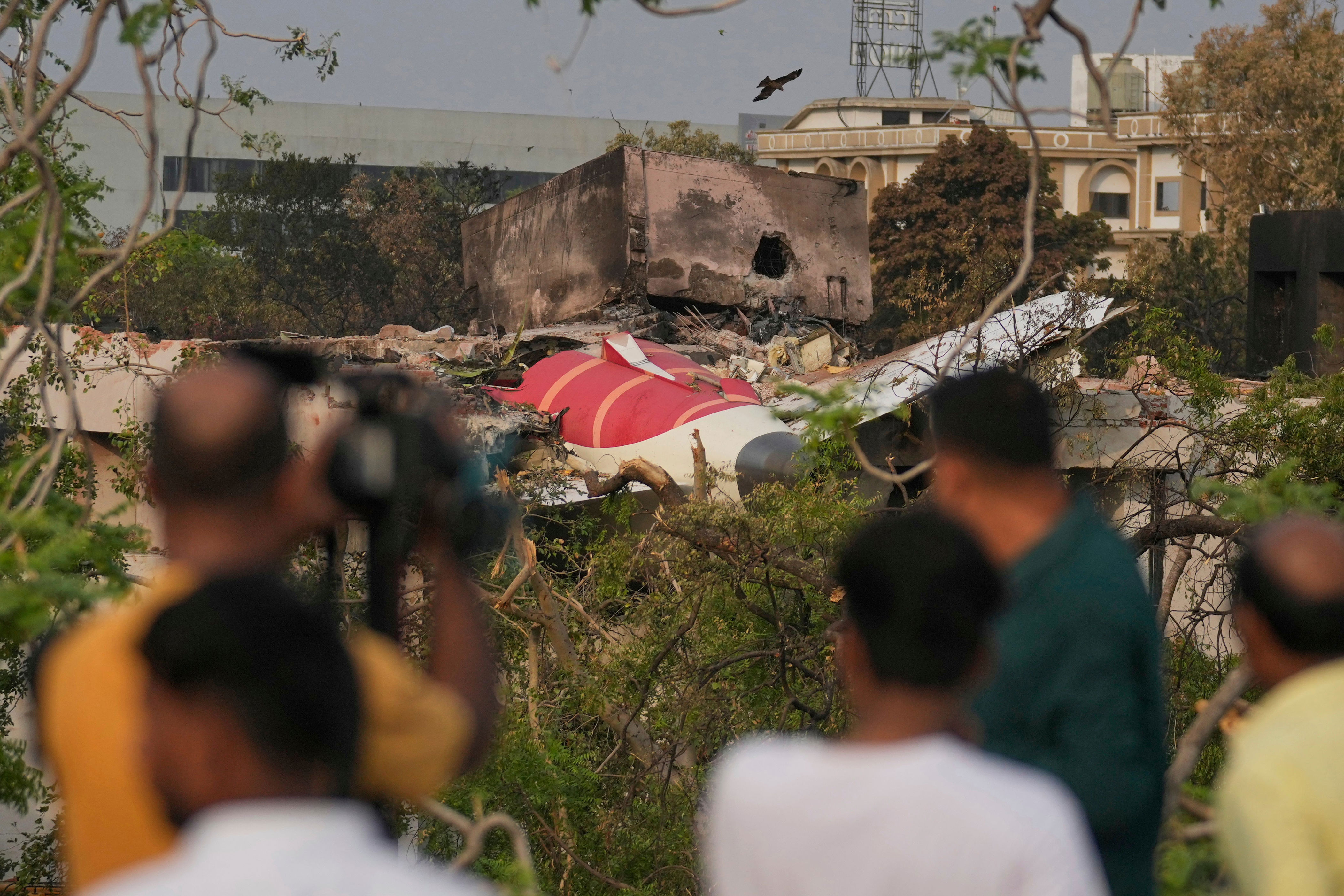
Air India crash investigation finds fuel switches cut off moments before impact
03:44
,
Arpan Rai
A preliminary report into the Air India crash
that killed
260 people last month showed three seconds after taking off, the plane’s engines fuel cutoff switches almost simultaneously flipped from run to cutoff, starving the engines of fuel.
The Boeing 787 Dreamliner
immediately began to lose thrust
and sink down, according to the report released by Indian aviation accident investigators.
One pilot can be heard on the cockpit voice recorder asking the other why he cut off the fuel. “The other pilot responded that he did not do so,” the report said.
Alex Ross
reports:
Air India crash investigation finds fuel switches cut off moments before impact
Fuel samples tested and found to be normal, report says
03:00
,
Jabed Ahmed
Fuel taken from the airport’s bowsers and tanks used to refuel the plane was tested by the aviation regulator’s lab and found satisfactory, the preliminary report said.
Only very small amounts of fuel could be retrieved from parts of the crashed aircraft itself.
These will be tested separately at a specialist lab, investigators said.
Wreckage moved and examined after crash
02:28
,
Jabed Ahmed
Investigators say the wreckage from the Air India crash has been moved to a secure area near Ahmedabad airport.
Drone photos and videos were taken at the site before the wreckage was cleared, the report said.
Both of the aircraft’s engines have been recovered from the crash site and stored in a hangar for detailed checks, the report added.
Other important components have also been identified and quarantined for further examination.
Plane had been checked for technical issue before flight
01:58
,
Jabed Ahmed
On the morning of the flight, engineers had checked the aircraft for a technical alert after it landed from Delhi, but cleared it to fly, the report said.
The pilots had arrived the day before, had enough rest, and passed pre-flight alcohol tests, it added.
Crash happened seconds after take-off, report says
01:43
,
Jabed Ahmed
A preliminary report into the Air India flight that crashed in June shows the engines lost power just seconds after take-off from Ahmedabad.
Investigators say the plane initially lifted off normally and reached 180 knots. But almost immediately, both engine fuel switches flipped from ‘run’ to ‘cutoff’ within about a second of each other, cutting off fuel and causing the engines to shut down.
What next after preliminary report published
01:29
,
Jabed Ahmed
The investigation remains ongoing.
Under international rules, a full report must be published within a year of the accident.
For now, experts are continuing to study the black box data and other evidence to understand what caused the sudden loss of power so soon after take-off.
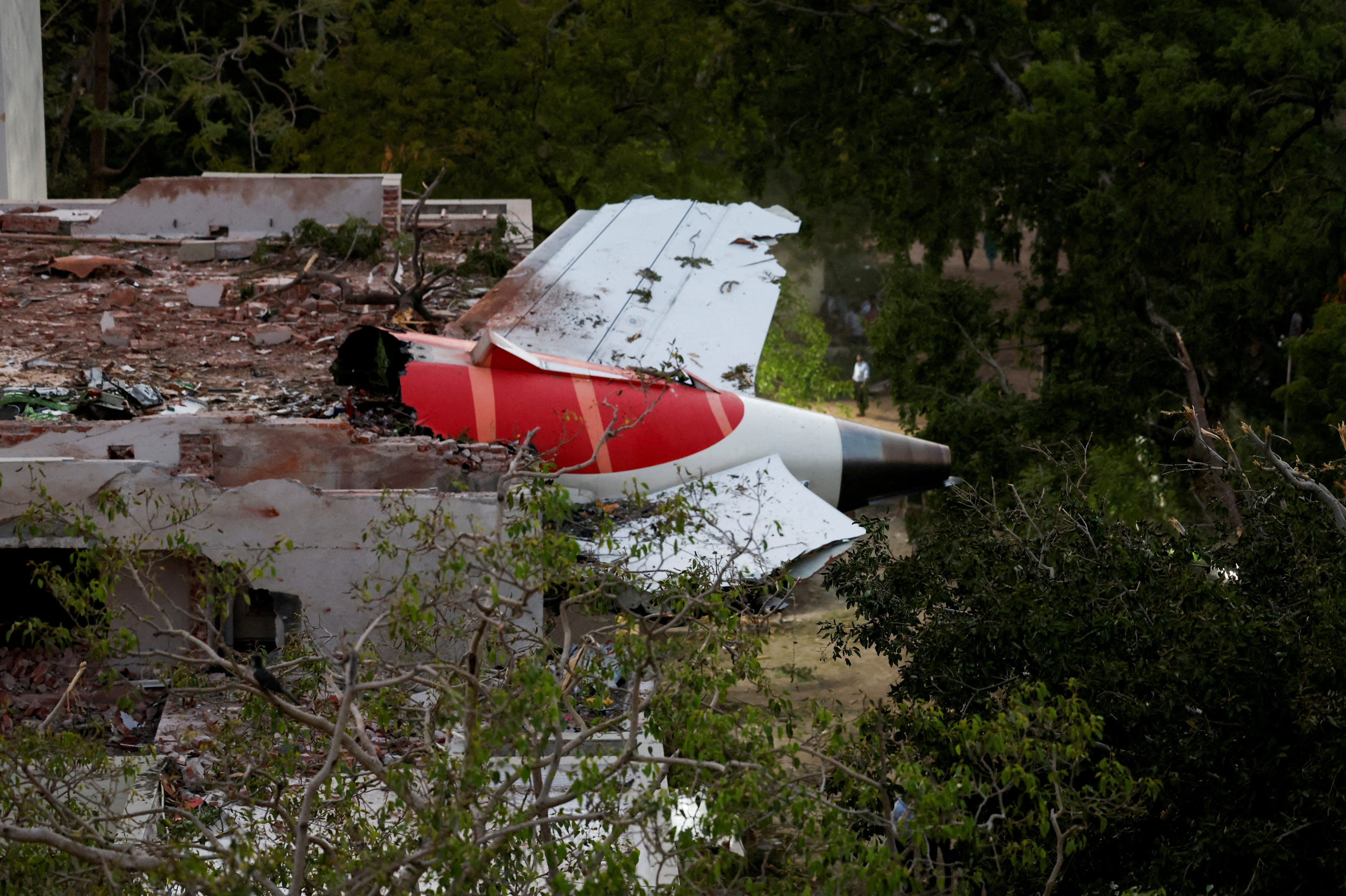
Air India flight ‘was doomed’ without sufficient power, says travel expert Simon Calder
01:14
,
Jabed Ahmed
Air India flight ‘was doomed’ without sufficient power, says Simon Calder
Watch | Air India crash sole survivor recalls how he escaped plane
Saturday 12 July 2025 00:59
,
Jabed Ahmed
Blackboxes were found on 24 June
Saturday 12 July 2025 00:36
,
Jabed Ahmed
On 24 June, the two black boxes were flown separately from Ahmedabad to an AAIB lab in Delhi on Indian Air Force aircraft.
That evening, investigators began extracting the data with help from technical experts from the AAIB and NTSB.
By 25 June, they had successfully accessed and downloaded data from the front recorder, which has an independent backup power supply to keep recording for about ten minutes if the plane loses power.
Timeline of events: 12-16 June
Saturday 12 July 2025 00:09
,
Jabed Ahmed
12 June: Air India flight crashes after take-off
On 12 June, an Air India Boeing 787 Dreamliner heading for London crashed shortly after take-off from Ahmedabad. Of the 242 people on board, only one survived. This was the world’s deadliest aviation accident in a decade, sparking an urgent investigation by Indian authorities.
13 June: Full investigation launched with U.S. experts involved
The day after the crash, India’s Aircraft Accident Investigation Bureau (AAIB) formally launched an investigation. The team is led by the AAIB’s director general and includes specialists in aviation medicine and air traffic control, alongside representatives from the US National Transportation Safety Board (NTSB). The investigation focused on recovering and analysing the plane’s black boxes.
13–16 June: Black boxes recovered from the crash site
Boeing 787 aircraft have two data recorders, one at the front and one at the rear, each storing cockpit voice and flight data. On 13 June, the first black box was recovered from the roof of a building near the crash site. Three days later, on 16 June, the second recorder was found among the wreckage.
Watch | The British victims of Air India plane crash
Friday 11 July 2025 23:39
,
Jabed Ahmed
Air India under fresh scrutiny as investigations widen
Friday 11 July 2025 23:26
,
Jabed Ahmed
In the weeks since the crash, Air India has faced mounting pressure over safety.
Europe’s aviation regulator plans to investigate its low-cost arm, Air India Express, after claims that engine parts weren’t replaced on time and records were falsified.
India’s own aviation watchdog has also warned Air India for flying Airbus planes with overdue safety checks and for “serious violations” of pilot duty time rules.
Air India issues statement on preliminary report
Friday 11 July 2025 23:26
,
Jabed Ahmed
Air India has released a statement expressing solidarity with the families and all those affected by the crash.
“We continue to mourn the loss and are fully committed to providing support during this difficult time,” the airline said.
Air India confirmed it had received the preliminary report published today by India’s Aircraft Accident Investigation Bureau (AAIB).
The airline added that it is working closely with regulators and other stakeholders, and will keep fully cooperating as the investigation continues.
As the inquiry is ongoing, Air India said it could not comment on specific findings and directed all further questions to the AAIB.
Black boxes recovered and final report expected within a year
Friday 11 July 2025 23:14
,
Jabed Ahmed
The plane’s black boxes, which record flight data and cockpit conversations, were recovered soon after the crash and downloaded in India.
These devices are critical for understanding the moments leading up to the accident.
Under international rules, a preliminary report must be issued within 30 days, but the full investigation is likely to take up to a year.
Cockpit audio shows pilots baffled by sudden shutdown
Friday 11 July 2025 23:56
,
Jabed Ahmed
Cockpit voice recordings captured one pilot asking the other why the engines had been cut off.
The other pilot replied that he hadn’t done it.
Investigators did not say which pilot made each comment or which one issued the desperate “Mayday, Mayday, Mayday” call moments before the crash.
At the crash site, both fuel switches were later found back in the ‘run’ position, and data showed the engines trying to relight before the jet crashed at low altitude.
Investigation ongoing with no warnings issued to other operators
Friday 11 July 2025 22:59
,
Jabed Ahmed
For now, Indian investigators say there’s no need for other airlines flying Boeing 787-8 jets or using GE GEnx-1B engines to take special safety measures.
The Aircraft Accident Investigation Bureau, part of India’s civil aviation ministry, is leading the probe into what has become the world’s deadliest aviation accident in a decade.
Experienced pilots with no sign of required emergency
Friday 11 July 2025 22:52
,
Jabed Ahmed
The report confirmed both pilots were experienced, with nearly 19,000 flying hours between them, including more than 9,000 on the Boeing 787.
Flipping the fuel switches to cutoff is usually done only when shutting down the engines at the gate or in emergencies like an engine fire, but the report says there was no sign of any such emergency.
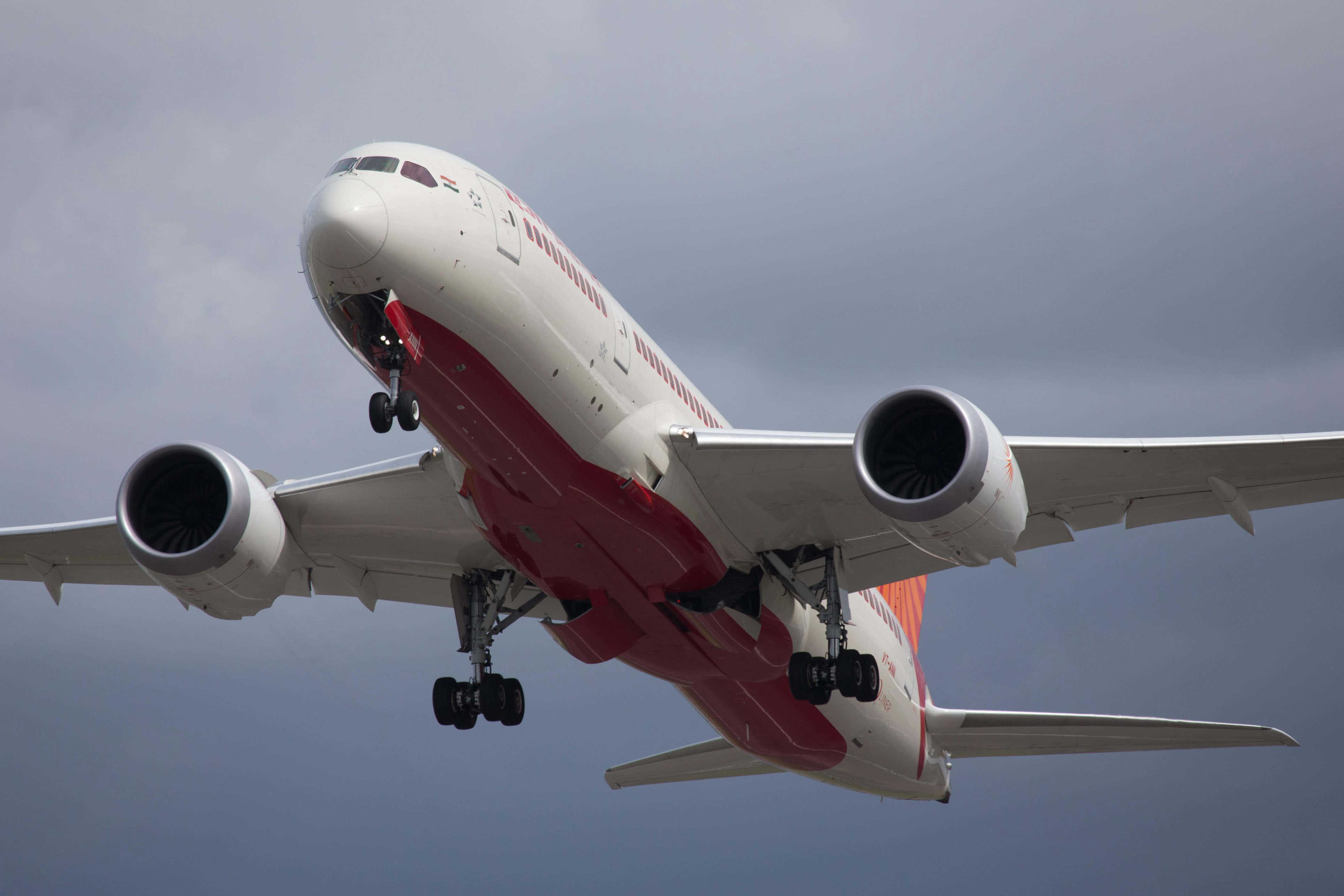
Experts say it’s almost impossible to knock the switches by accident
Friday 11 July 2025 22:41
,
Jabed Ahmed
A key unanswered question is how the switches moved to cutoff in the first place.
US aviation safety expert John Cox said pilots can’t simply bump the switches by mistake because they’re designed to prevent accidental movement.
“You can’t bump them and they move,” he told Reuters.
Another expert, Anthony Brickhouse, said investigators need to find out whether the switches moved on their own or were moved by a pilot, and if so, why
The report so far does not explain.
Simon Calder gives his verdict on the preliminary report
Friday 11 July 2025 22:40
,
Jabed Ahmed
Simon Calder,
The Independent’s
Travel Correspondent, has studied the report and picked out these elements of the 32-second flight of AI 171.
Three seconds after take-off, the aircraft was climbing and accelerating with an airspeed of 180 knots (207mph), in line with normal performance.
The report says: “Immediately thereafter, the Engine 1 and Engine 2 fuel cutoff switches transitioned from RUN to CUTOFF position one after another.” There was a one-second gap between the transitions for each engine.
The first crucial question: What caused the transition?
The report says: “In the cockpit voice recording, one of the pilots is heard asking the other why did he cutoff? The other pilot responded that he did not do so.”
Both engines were starved of fuel at the moment when power was most needed.
It took 10 seconds for one engine and 14 seconds for the other for the switches to be returned to the normal position – “transitioned from CUTOFF to RUN”. The second crucial question: Why did that take so long? Engines can relight, but it takes time. The report says that, after the switches reverted, “Engine 1’s core deceleration stopped, reversed and started to progress to recovery. Engine 2 was able to relight but could not arrest core speed deceleration and reintroduced fuel repeatedly to increase core speed acceleration and recovery.”
With the engines “below minimum idle speed” at which they could supply the necessary power, the rapid air turbine (RAT) had automatically deployed. This is an emergency device to supply hydraulic power to the aircraft’s control surfaces. But with insufficient power, the plane was doomed.
“As the aircraft was losing altitude, it initially made contact with a series of trees and an incineration chimney inside the Army Medical Corps compound before impacting the northeast wall of the Building A,” the report says.
The final death toll appears to be settled at all 12 crew, 229 passengers and 19 on the ground, totalling 260. In addition, 67 people on the ground were injured, along with the sole survivor of the crash.
Given the horrifying scale of damage to buildings on the ground, it appears the number of dead and injured could have been much higher.
Significantly, the report says: “At this stage of investigation, there are no recommended actions to B787-8 and/or GE GEnx-1B engine operators and manufacturers.” This suggests no evidence of a technical fault that might jeopardise similar aircraft.
Witness statements and post-mortems reviewed
Friday 11 July 2025 22:26
,
Jabed Ahmed
Investigators have taken statements from witnesses and the surviving passenger.
They are also reviewing post-mortem reports from crew and passengers to check for any medical factors that could help explain what happened.

Fuel samples tested and found to be normal, report says
Friday 11 July 2025 22:23
,
Jabed Ahmed
Fuel taken from the airport’s bowsers and tanks used to refuel the plane was tested by the aviation regulator’s lab and found satisfactory, the preliminary report said.
Only very small amounts of fuel could be retrieved from parts of the crashed aircraft itself.
These will be tested separately at a specialist lab, investigators said.
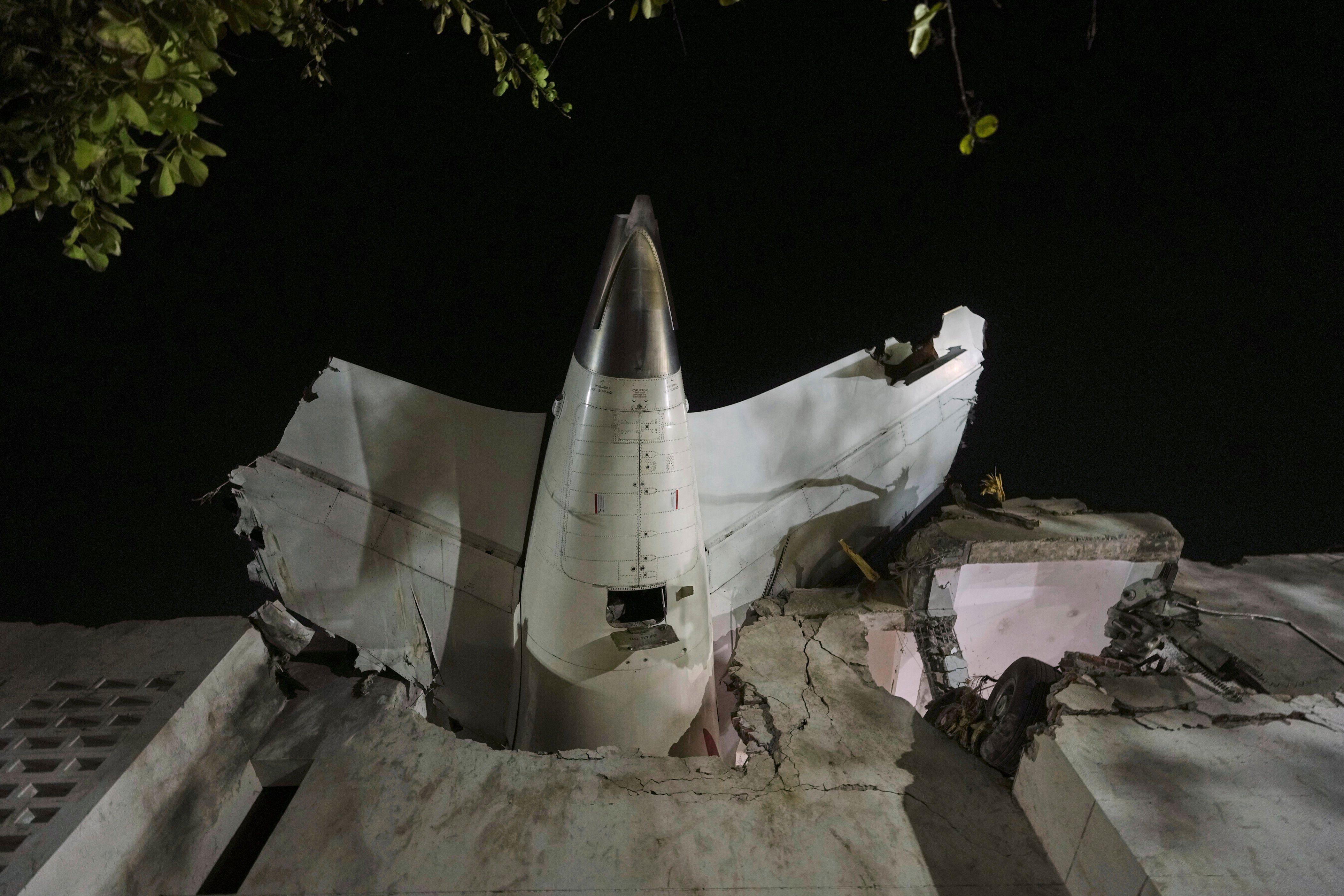
Wreckage moved and examined after crash
Friday 11 July 2025 22:20
,
Jabed Ahmed
Investigators say the wreckage from the Air India crash has been moved to a secure area near Ahmedabad airport.
Drone photos and videos were taken at the site before the wreckage was cleared, the report said.
Both of the aircraft’s engines have been recovered from the crash site and stored in a hangar for detailed checks, the report added.
Other important components have also been identified and quarantined for further examination.
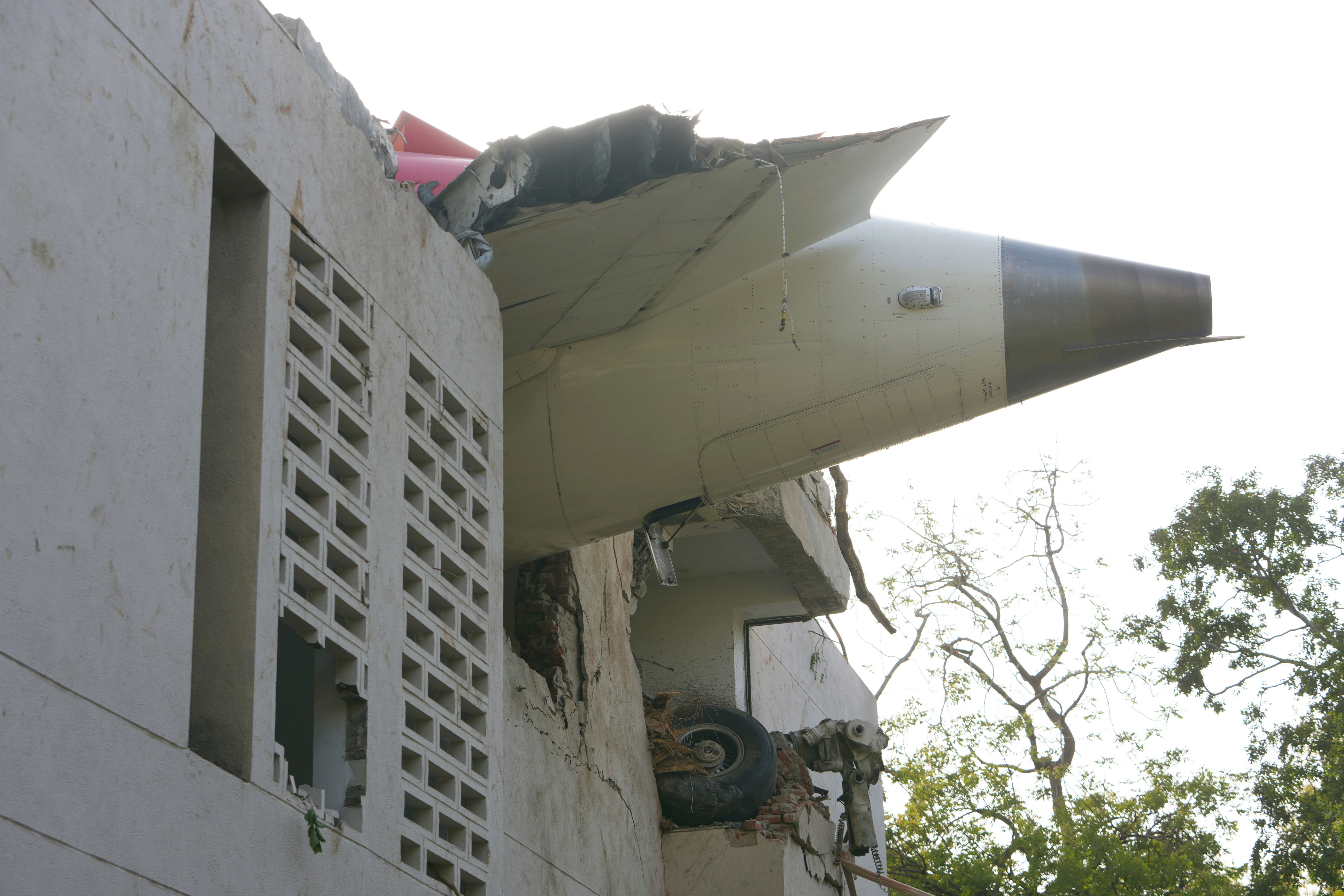
Plane had been checked for technical issue before flight
Friday 11 July 2025 22:14
,
Jabed Ahmed
On the morning of the flight, engineers had checked the aircraft for a technical alert after it landed from Delhi, but cleared it to fly, the report said.
The pilots had arrived the day before, had enough rest, and passed pre-flight alcohol tests, it added.
Cockpit audio reveals pilots confused by engine shutdown
Friday 11 July 2025 22:13
,
Jabed Ahmed
In the cockpit voice recording, one pilot asked the other why the engines had been cut. The other replied that he hadn’t done it.
The crew made a “mayday” call shortly before the plane crashed beyond the airport perimeter.
After the engines shut down, the pilots tried to restart them. One engine began to recover, but the other couldn’t regain enough power. The aircraft lost height quickly and crashed.
Crash happened seconds after take-off, report says
Friday 11 July 2025 22:12
,
Jabed Ahmed
A preliminary report into the Air India flight that crashed in June shows the engines lost power just seconds after take-off from Ahmedabad.
Investigators say the plane initially lifted off normally and reached 180 knots. But almost immediately, both engine fuel switches flipped from ‘run’ to ‘cutoff’ within about a second of each other, cutting off fuel and causing the engines to shut down.
A recap of the crash
Friday 11 July 2025 22:09
,
Jabed Ahmed
At least 275 people
have been confirmed dead
after an
Air India flight bound for London crashed
shortly after take-off from Ahmedabad, India, on Thursday 12 June, in what is now the world’s deadliest air disaster in a decade.
The Boeing 787 Dreamliner departed from Ahmedabad airport in the western state of Gujarat at 1.39pm local time (8.09am BST). But after issuing a mayday call, it crashed into a residential area called Meghani Nagar just five minutes after taking off, India’s civil aviation authority confirmed.
Gujarat health officials said on 25 June that the final death toll was believed to be 275, including passengers, crew, and residents of the medical college hostel struck by the aircraft.
Rescue crews and investigators took days to sift through the charred remains of the hostel and aircraft as large cranes were deployed to clear the debris.
The sole survivor, Vishwash Kumar Ramesh, who had been sitting in seat 11A, was identified by local police shortly after the crash.
India finds engine switch movement in fatal Air India crash
Friday 11 July 2025 22:05
,
Jabed Ahmed
A preliminary report into the Air India crash that killed 260 people last month showed that three seconds after taking off, the plane’s engines’ fuel cutoff switches almost simultaneously flipped from run to cutoff, starving the engines of fuel.
The Boeing 787 Dreamliner immediately began to lose thrust and sink down, according to the report released by Indian aviation accident investigators.
One pilot can be heard on the cockpit voice recorder asking the other why he cut off the fuel. “The other pilot responded that he did not do so,” the report said.
It did not identify which remarks were made by the flight’s captain and which by the first officer, nor which pilot transmitted “Mayday, Mayday, Mayday” just before the crash.
The preliminary report also does not say how the switch could have flipped to the cutoff position on the 12 June London-bound flight from the Indian city of Ahmedabad.

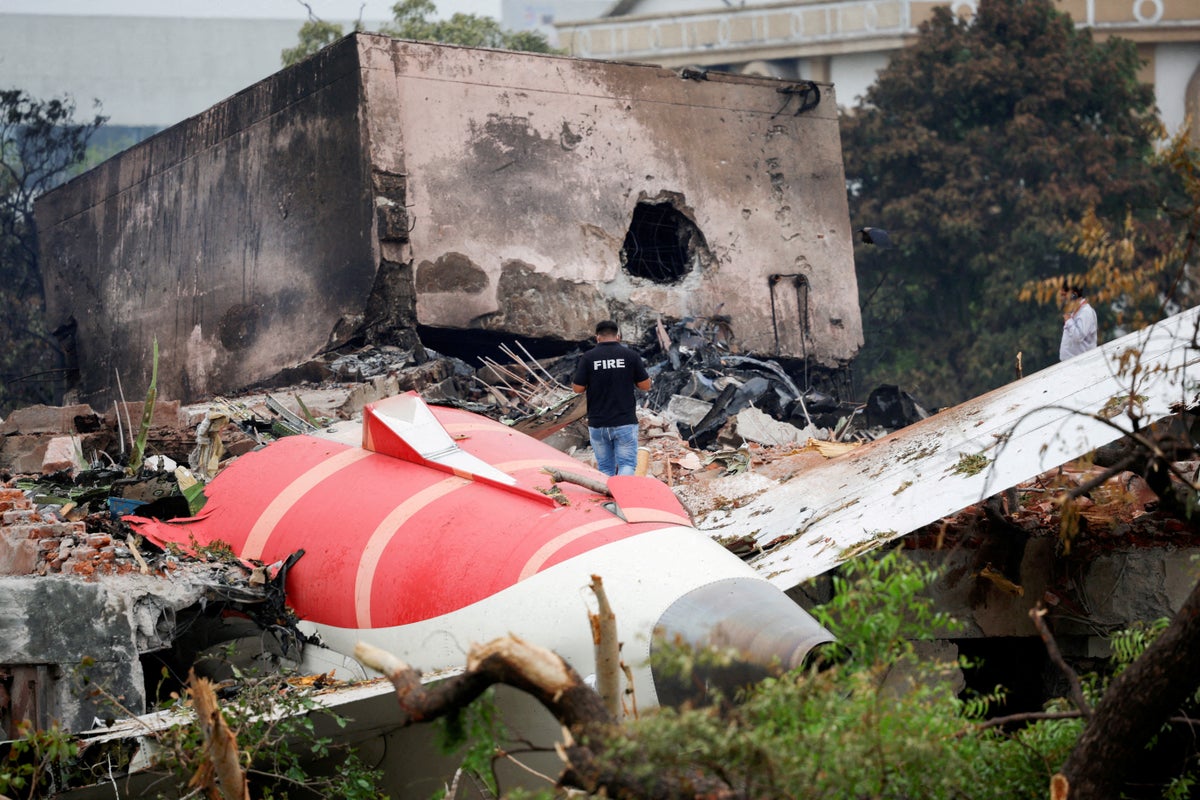





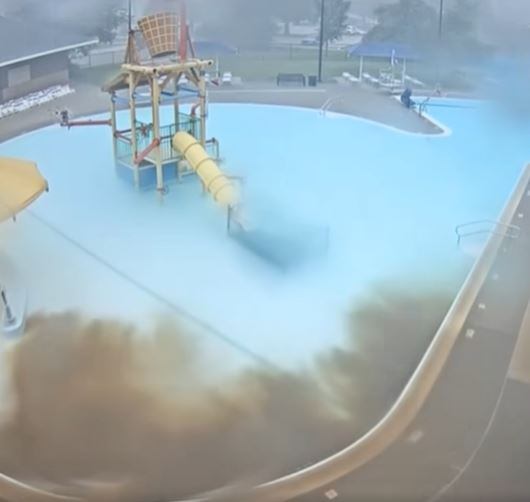


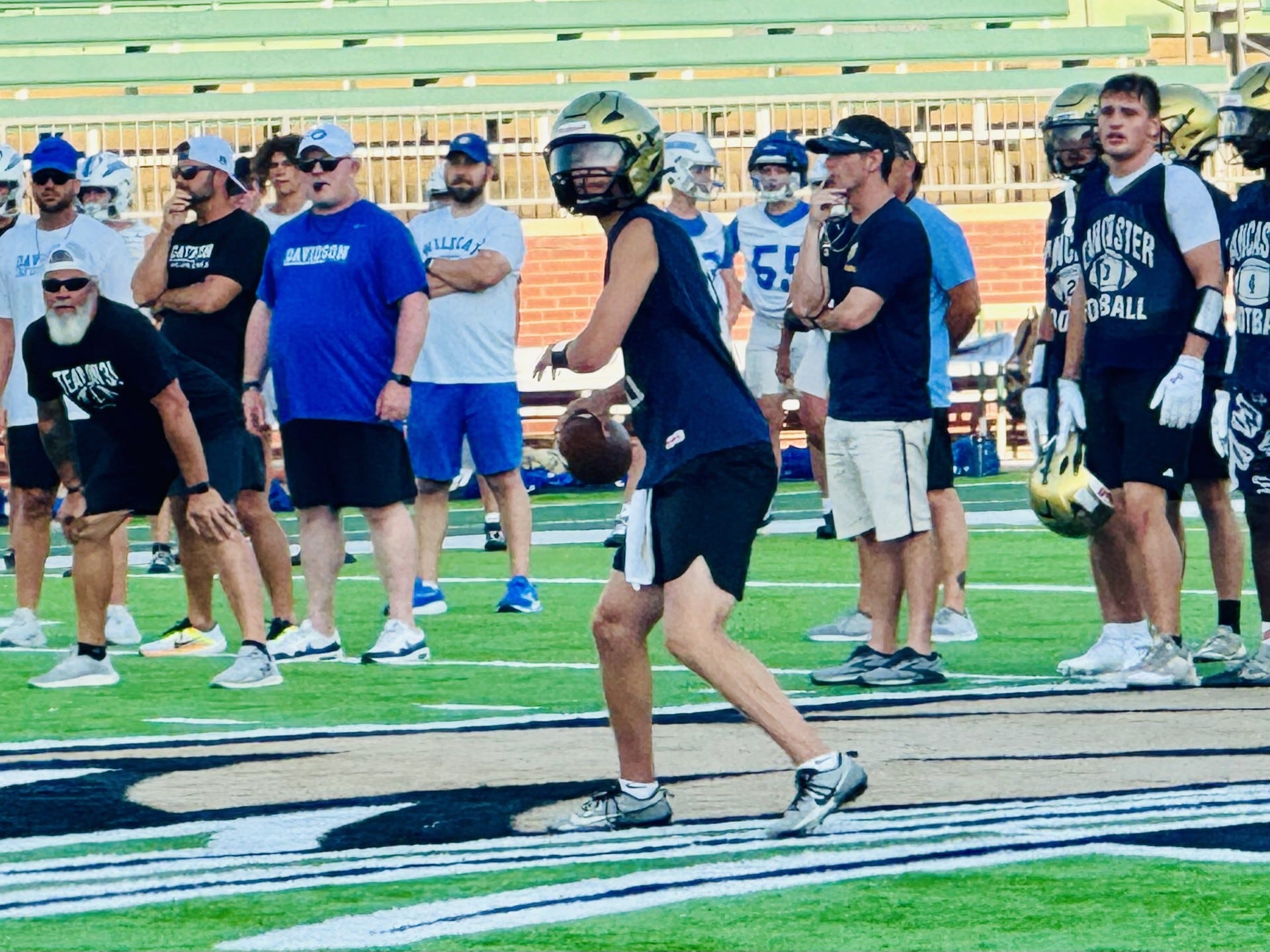

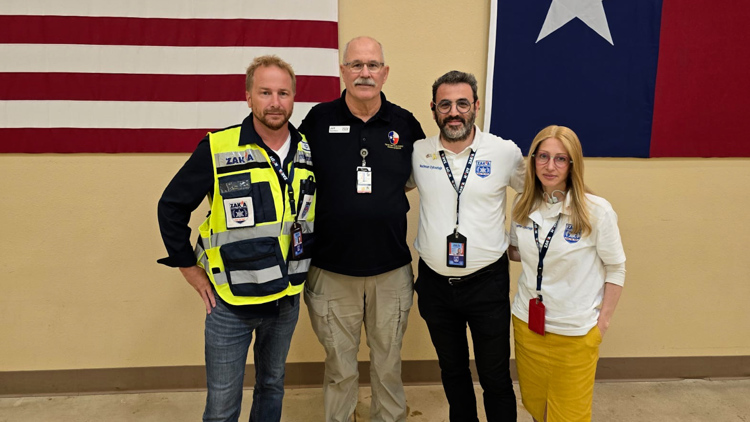
Leave a Reply